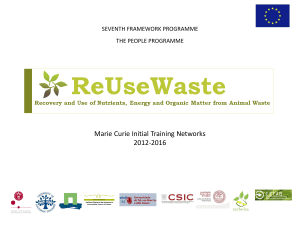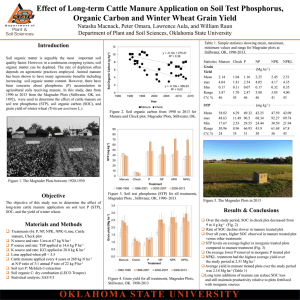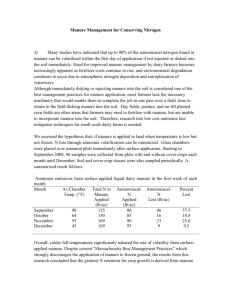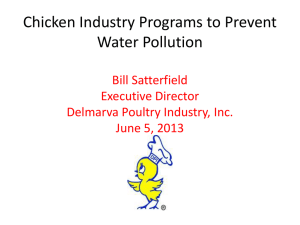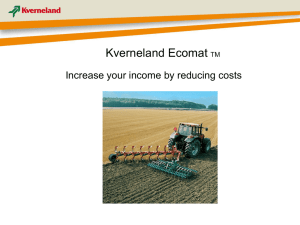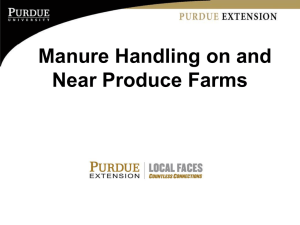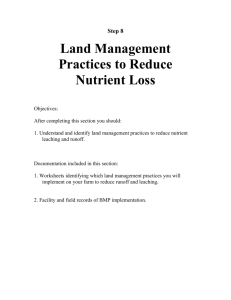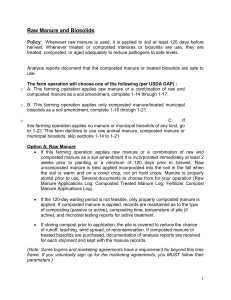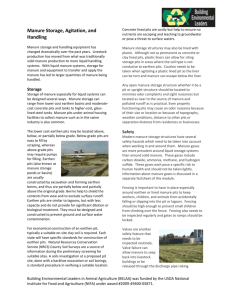Field application of liquid manure for reduced ammonia emissions
advertisement
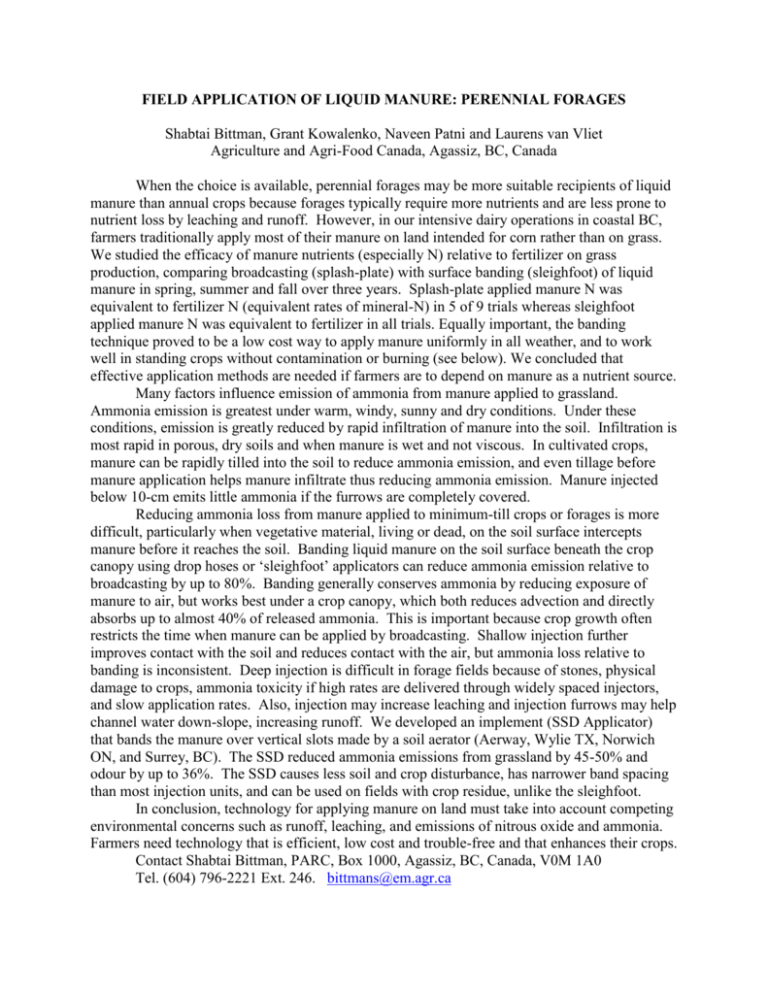
FIELD APPLICATION OF LIQUID MANURE: PERENNIAL FORAGES Shabtai Bittman, Grant Kowalenko, Naveen Patni and Laurens van Vliet Agriculture and Agri-Food Canada, Agassiz, BC, Canada When the choice is available, perennial forages may be more suitable recipients of liquid manure than annual crops because forages typically require more nutrients and are less prone to nutrient loss by leaching and runoff. However, in our intensive dairy operations in coastal BC, farmers traditionally apply most of their manure on land intended for corn rather than on grass. We studied the efficacy of manure nutrients (especially N) relative to fertilizer on grass production, comparing broadcasting (splash-plate) with surface banding (sleighfoot) of liquid manure in spring, summer and fall over three years. Splash-plate applied manure N was equivalent to fertilizer N (equivalent rates of mineral-N) in 5 of 9 trials whereas sleighfoot applied manure N was equivalent to fertilizer in all trials. Equally important, the banding technique proved to be a low cost way to apply manure uniformly in all weather, and to work well in standing crops without contamination or burning (see below). We concluded that effective application methods are needed if farmers are to depend on manure as a nutrient source. Many factors influence emission of ammonia from manure applied to grassland. Ammonia emission is greatest under warm, windy, sunny and dry conditions. Under these conditions, emission is greatly reduced by rapid infiltration of manure into the soil. Infiltration is most rapid in porous, dry soils and when manure is wet and not viscous. In cultivated crops, manure can be rapidly tilled into the soil to reduce ammonia emission, and even tillage before manure application helps manure infiltrate thus reducing ammonia emission. Manure injected below 10-cm emits little ammonia if the furrows are completely covered. Reducing ammonia loss from manure applied to minimum-till crops or forages is more difficult, particularly when vegetative material, living or dead, on the soil surface intercepts manure before it reaches the soil. Banding liquid manure on the soil surface beneath the crop canopy using drop hoses or ‘sleighfoot’ applicators can reduce ammonia emission relative to broadcasting by up to 80%. Banding generally conserves ammonia by reducing exposure of manure to air, but works best under a crop canopy, which both reduces advection and directly absorbs up to almost 40% of released ammonia. This is important because crop growth often restricts the time when manure can be applied by broadcasting. Shallow injection further improves contact with the soil and reduces contact with the air, but ammonia loss relative to banding is inconsistent. Deep injection is difficult in forage fields because of stones, physical damage to crops, ammonia toxicity if high rates are delivered through widely spaced injectors, and slow application rates. Also, injection may increase leaching and injection furrows may help channel water down-slope, increasing runoff. We developed an implement (SSD Applicator) that bands the manure over vertical slots made by a soil aerator (Aerway, Wylie TX, Norwich ON, and Surrey, BC). The SSD reduced ammonia emissions from grassland by 45-50% and odour by up to 36%. The SSD causes less soil and crop disturbance, has narrower band spacing than most injection units, and can be used on fields with crop residue, unlike the sleighfoot. In conclusion, technology for applying manure on land must take into account competing environmental concerns such as runoff, leaching, and emissions of nitrous oxide and ammonia. Farmers need technology that is efficient, low cost and trouble-free and that enhances their crops. Contact Shabtai Bittman, PARC, Box 1000, Agassiz, BC, Canada, V0M 1A0 Tel. (604) 796-2221 Ext. 246. bittmans@em.agr.ca


